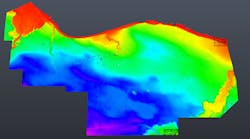Growing numbers of wireless devices, including those in “smart” buildings and cities, are leading to crowded radio spectrum and thus the need to open new spectrum. Cognitive-radio (CR) approaches provide a way to effectively use open frequency bands by dynamic spectrum access. They detect when frequency bands are not occupied by its primary users and allow the use of those frequency bands by secondary users. Secondary users cannot interfere in any way with primary users, requiring dependable detection of signal energy within a frequency band of interest.
In pursuit of CR technology, researchers from the Electrical and Computer Engineering Department of Texas A&M University (College Station, TX) explored the requirements of spectrum sensors for CR applications and the possible solutions for such spectrum sensors.
Spectrum sensing must provide high sensitivity and fast sensing times to avoid interference with primary users and to identify the times and locations of frequencies not used by primary communications systems. The unused spectrum is typically referred to as white space or spectrum holes; the times and locations are instrumental in guiding the transmit times for a CR system. Spectrum sensing is also useful for interference detection between different wireless communications systems.
Primary narrowband communications signals are typically transmitted at higher levels than the broadband transmissions in ultrawideband (UWB) communications systems. As a result, narrowband signals can act as interference when they fall within the frequency range of an UWB receiver. Spectrum sensing can detect the potential interference and provide a trigger for activating dynamic filtering within an UWB receiver to reject the interfering signals.
Four techniques are currently used for spectrum sensing: spectrum sweeping, compressive sweeping, dispersion frequency-time mapping, and frequency-space mapping. The approaches employ combinations of analog and digital circuitry, as fabricated in CMOS integrated circuits (ICs).
The researchers refer to many examples of how spectrum sensing is applied, such as for CRs operating within television VHF/UHF broadcast white space. Analog system implementations involve downconversion of received signals to baseband (BB) frequencies for analysis of signal activity. The four spectrum-sensing techniques each have drawbacks and benefits for different applications of CR systems, but with room for improvements that can make CR a realistic technology for efficient and cost-effective use of available frequency spectrum.
See “Spectrum Sensing,” IEEE Microwave Magazine, June 2019, pp. 51-73.

